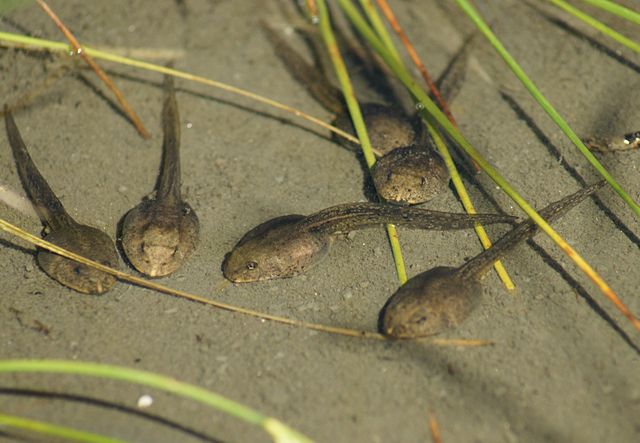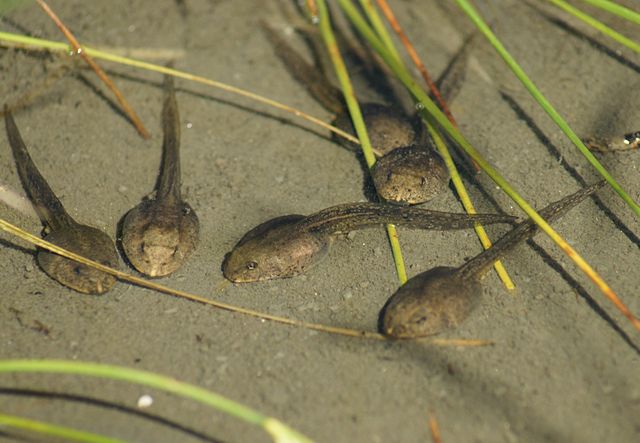The study found that the RCV-Z2 ranaviruses can quickly infect amphibian populations
Researchers with the University of Tennessee Institute of Agriculture and the University of Florida conducted a study on how RCV-Z2, a chimeric Frog virus 3 (FV3)-like ranavirus, spread through a population of North American wood frog (Lithobates sylvaticus) tadpoles. That study, “A highly invasive chimeric ranavirus can decimate tadpole populations rapidly through multiple transmission pathways,” was published October 15 in the journal Ecological Modeling.

böhringer friedrich /Wikipedia
Tadpoles can quickly be negatiely affected by ranaviruses.
The study found that the RCV-Z2 ranaviruses can quickly infect amphibian populations through direct contact, feeding on corpses, and via waterborne transmission. The data points to significant risks to amphibian diversity in North America, and studies have already shown that RCV-Z2 has been transmitted to mosquitofish, turtles and multiple amphibian species.
Mass Die Off Of Wood Frog Tadpoles Concerns Scientist
Ranavirus Confirmed In Canadian Reptile For First Time
Ranaviruses are rapidly emerging globally and are infecting a variety of reptiles and amphibians. Ranaviruses also infect fish. This particular strain ism believed to have mixed its DNA with another ranavirus in a Georgia bullfrog farm, creating a virulent hybrid virus.
“In our previous work, we found that RCV-Z2 is a recombinant ranavirus that has DNA from a strain in North America and one from Europe and Asia,” Matt Gray, professor in the UT Institute of Agriculture Center for Wildlife Health and founder and past director of the Global Ranavirus Consortium said in a statement detailing the study. “We think these viruses mixed DNA in a bullfrog farm in southern Georgia — the outcome was a highly virulent hybrid virus! The point of this modeling effort was to demonstrate how this evolved virus with eastern hemisphere DNA can infect and spread in a widely distributed amphibian species,” Gray said. “The news is not good.”


